- 태아의 종축과 모체의 종축 간의 상호 위치관계를 태아체위 또는 태위라고 한다. 태위에는 안면 태위, 전두 태위, 두정 태위, 둔 태위, 경갑 태위 등 여러 종류가 있다.
- 분만 중 산도 속으로 가장 먼저 들어가는 태아의 신체의 부분에 따라 이런 태위가 결정된다. 전체 분만 태위 중 95%에서 태아의 두부가 산도 속으로 가장 먼저 들어가는 두부 태위이다. 이렇게 태아가 두부 태위를 취하고 두부가 산도 속으로 가장 먼저 들어갈 때 분만은 더 자연적으로 이루어지기 쉽다.
- 태아의 머리의 위치와 모체의 골반과의 상관관계에 따라 후두 전위, 후두 후위 등 여러 종류의 두부 태위가 있을 수 있다. 그 중 어떤 종류의 두부 태위를 취하느냐에 따라 분만이 쉽게 때로는 어렵게 될 수 있다.
- 두부 태위 중 특히 후두 전위와 후두 후위에 관해 알아두는 것이 좋기 때문에 다음에 설명한다. 태아의 등이 모체의 복부를 향하고 태아의 얼굴이 모체의 미추를 향하는 두부 태위를 후두 전위 (Occipitoanterior presentation) 라고 하고 태아가 후두 전위의 태위를 취하면 분만하기가 가장 쉽다.
- 태아의 등이 모체의 등을 향하고 태아의 얼굴이 모체의 치골을 향하는 두부 태위를 후두 후위 (Occipitoposterior presentation) 라고 한다. 분만 중 태아가 후두 후위를 취하면 모체에게 심한 요통이 생길 수 있고 분만이 지연될 수 있다.
- 분만 중 태아의 엉덩이나 발이 산도 속 으로 가장 먼저 나오는 태위를 둔위(Breech presentation)라고 한다. 둔위는 전체 분만 태위중 4% 정도 된다. 자연분만을 하면, 특히 초산에서, 아기에게 위험성이 생길 가능성이 있기 때문에 어떤 의사들은 태위의 체위가 둔위이면 제왕절개로 분만하기도 한다.
- 때로는 임신 32 주 경에 임신부가 등을 바닥에 대고 두 무릎을 구부려 세우고 엉덩이를 베개나 쿠숀으로 복부보다 더 높히 바치고 하루에 10분정도 2회 하면 둔위가 두위로 바꿔질 수도 있다.
- 하루에 2번, 한 번에 10분 간 2~3주 동안 공복에 복부에 긴장을 풀면 약 89%에서 둔위가 두위로 바꿔질 수도 있다고 한다.
- 임신 37주 전에 둔위가 두위로 바꿔지지 않으면 임신 37~38주에 의사가 손으로 임신부의 배에서 둔위를 두위로 바꿀 수도 있다.
- 태아의 몸통이 자궁에 비스듬히 또는 반듯이 가로질러 있는 체위를 횡위라고 한다. 잘 아시겠지만 분만 중 자궁의 경부에 있는 경관이 최고 8~10cm 정도 까지만 벌어질 수 있기 때문에 태아의 체위가 횡위로 있으면 자연 분만으로 분만하기가 불가능하다.
- 둔위 체위를 두위 체위로 임신부 체위를 바꾸는 방법과 거의 같은 방법으로 임신 32주 전에 바꿀 수도 있고 임신 37주에 임신부 복부를 통해 손으로 바꿀 수도 있다.
- 이런 저런 이유로 분만 전 임신 정기 검진의 중요성을 여기서 또 한번 알게 된다. 또 사실은 임신부들이 이런 산과학 전문 지식까지 알아야 하나 의문도 갖겠지만 요즘 이런 지식까지 알아 놓는 것이 좋다고 생각한다.
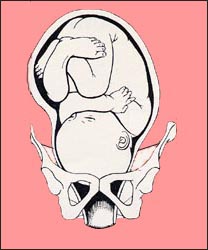
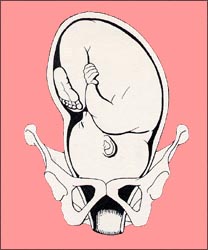
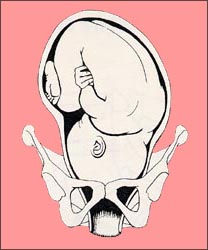
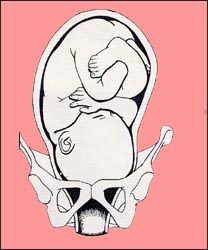
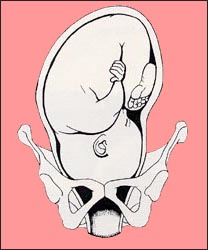

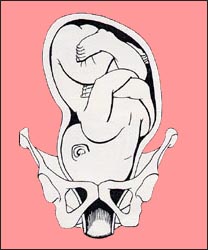
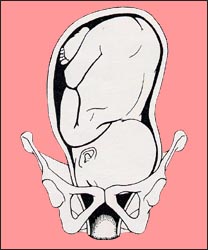



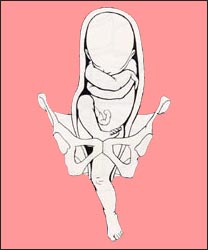
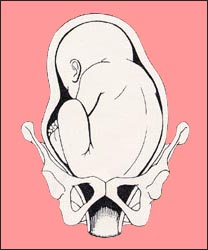
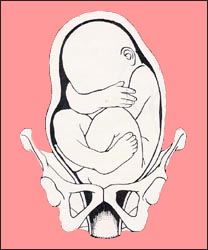

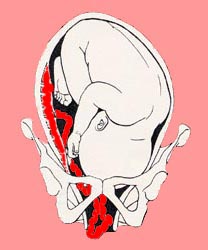
![]()
Copyright ⓒ 2014 John Sangwon Lee, MD, FAAP
Fetal presentation during labor 분만중 태아 체위(태위)
- The mutual positional relationship between the ordinate of the fetus and the ordinate of the mother is called the fetal position or position.
- There are several types of fetal position(presentation), including Facial Taewi, fontal head , vertex, buttock, and shoulder.
- This position is determined by the part of the fetus’s body that first enters the birth canal during delivery.
- In 95% of all delivery positions, the fetus’s head is the first to enter the birth canal.
- In this way, when the fetus takes the position of the tofu and the tofu first enters the birth canal, delivery is more likely to occur naturally.
- Depending on the relationship between the position of the fetus’s head and the mother’s pelvis, there may be several types of head position, such as laryngeal dislocation and laryngeal posterior position.
- Depending on which type of tofu you take, delivery can be easy and sometimes difficult. It is good to know about the laryngeal dislocation and the posterior larynx among the head positions, so they will be described next.
- If the fetus’s back faces the mother’s abdomen and the fetus’s face faces the mother’s tail, the head position is called occiput anterior presentation, and if the fetus takes the position of laryngeal dislocation, it is easiest to deliver.
- The head position in which the fetus’s back faces the mother’s back and the fetus’s face faces the maternal pubis is called the occiput posterior presentation.
- If the fetus takes the posterior larynx during delivery, the mother may have severe back pain and delivery may be delayed.
- The place where the fetus’s buttocks or feet appear first into the birth canal during delivery is called the Breech presentation. The blunt position is about 4% of the total delivery position.

Left rear posterior presentation


Left transverse posterior presentation


Left anterior posterior presentation


Right posterior occipital presentation


Right transverse occipital presentation


Right transverse occipital presentation


left anterior chin presentation


Right rear chin presentation


Right front chin presentation


The shoulder blade is the first to appear in the birth canal


The gluteal region where the buttocks appear first in the birth canal


the foot appears first on the birth canal


Left anterior sacral pelvis presentation


Left posterior sacral pelvis presentation


From the forehead presentation


Source-Becoming A Parent, Clinical Education Aid: Ross Laboratories, Columbus, Ohio 43216
Copyright ⓒ 2014 John Sangwon Lee, MD, FAAP
“부모도 반의사가 되어야 한다”-본 사이트의 내용은 여러분들의 의사로부터 얻은 정보와 진료를 대신할 수 없습니다.
“The information contained in this publication should not be used as a substitute for the medical care and advice of your doctor. There may be variations in treatment that your doctor may recommend based on individual facts and circumstances.
“Parental education is the best medicine.“